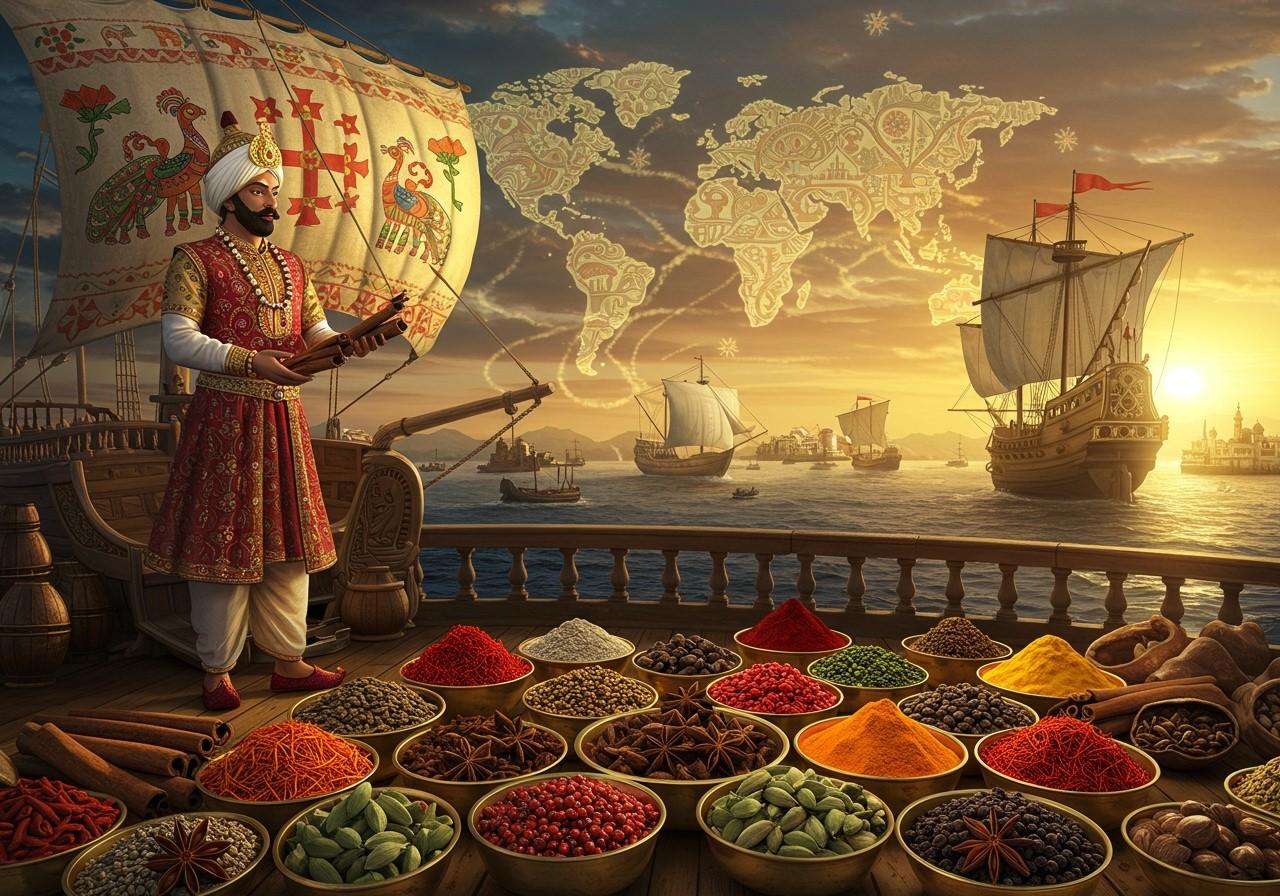
The spice trade holds a captivating place in history, profoundly influencing global exploration and shaping the modern world. The quest for aromatic spices such as pepper, cinnamon, cloves, nutmeg, ginger, and turmeric fueled daring maritime expeditions and the discovery of new lands. Understanding the immense value placed on these spices in Europe, particularly during the 15th century, allows us to appreciate their pivotal role in history, much like the role oil plays in international trade today.
The Importance of Spices in European Society
In medieval Europe, spices were far more than mere culinary additives. They held significant cultural, medicinal, and economic importance.
- Culinary Uses: Spices transformed bland European cuisine, adding depth and complexity to dishes. They were also crucial for preserving food, a vital function before refrigeration.
- Medicinal Applications: Many spices were believed to possess healing properties and were used to treat various ailments, further increasing their desirability.
- Religious Significance: Certain spices played a role in religious ceremonies and rituals, adding another layer to their value.
- Status Symbol: Possessing exotic spices signified wealth and social status, driving demand among the European elite.
This high demand, coupled with the challenges of accessing spices through established Middle Eastern routes, fueled the European desire to find direct sea routes to Asia, the primary source of these precious commodities.
Early Spice Trade Routes and Challenges
Before the Age of Exploration, spices reached Europe through established land and sea routes:
- The Silk Road: This overland route connected Asia and Europe, facilitating the trade of spices and other goods. However, it was long, arduous, and fraught with dangers.
- Maritime Routes: Existing sea routes through the Indian Ocean, Red Sea, and Mediterranean were also used but posed challenges such as piracy and political instability.
These routes were controlled by intermediaries, often resulting in high prices and limited access for European traders. Key trading centers like Venice and Alexandria played significant roles in this lucrative but complex network.
The Role of Explorers in the Spice Trade
Driven by the desire for direct access to Asian spices, European explorers embarked on daring voyages that reshaped the world:
- Vasco da Gama (late 15th century): His successful voyage to India around the Cape of Good Hope established a direct sea route, significantly impacting Portuguese dominance in the spice trade.
- Christopher Columbus (late 15th – early 16th century): While seeking a westward route to Asia, Columbus inadvertently discovered the Americas, opening up a new chapter in global history.
- Ferdinand Magellan (early 16th century): His circumnavigation of the globe further expanded geographical knowledge and influenced global trade patterns.
Impact on European Exploration and Colonization
The spice trade significantly influenced European exploration, leading to profound global consequences:
- Cultural Exchange: The exchange of goods, cultures, and ideas between Europe and other regions intensified, although often accompanied by conflict and exploitation.
- Colonialism: The pursuit of spices and other resources led to the establishment of European colonies in Asia, Africa, and the Americas, dramatically altering the political landscape.
- Global Trade Networks: The spice trade played a vital role in the development of complex global trade networks, fostering economic growth and cultural exchange, albeit with significant social and political ramifications.
Economic and Cultural Consequences
The economic and cultural impacts of the spice trade were far-reaching:
- Economic Transformation: The influx of spices and other valuable goods transformed European economies, leading to the rise of merchant classes and powerful trading companies like the Dutch East India Company.
- Culinary Influence: Spices enriched European cuisine, introducing new flavors and culinary practices. This fusion of culinary traditions continues to shape our palates today.
- Cultural Diffusion: Beyond cuisine, the spice trade influenced fashion, art, and even agricultural practices, fostering a global exchange of ideas and customs.
Poojn.in: Connecting You to India’s Rich Spice Heritage
At Poojn.in, we honor this rich history by offering authentic Indian spices, including the highly sought-after Kabab Chini (allspice berries). Experience the same quality that once captivated European explorers, available in convenient sizes and packaged to preserve their natural essence. Explore our wide selection of traditional spices and ritual items at Poojn.in.
Conclusion
The spice trade’s legacy extends far beyond the culinary realm. It was a driving force behind global exploration, colonization, and the development of international trade networks. By understanding its historical significance, we gain a deeper appreciation for the interconnectedness of our world and the enduring influence of these aromatic treasures.
Exploring Incense: Art, Science, Puja, and Aromatherapy
India’s Sacred Sites: Exploring the Spiritual Heart of Famous Temples


